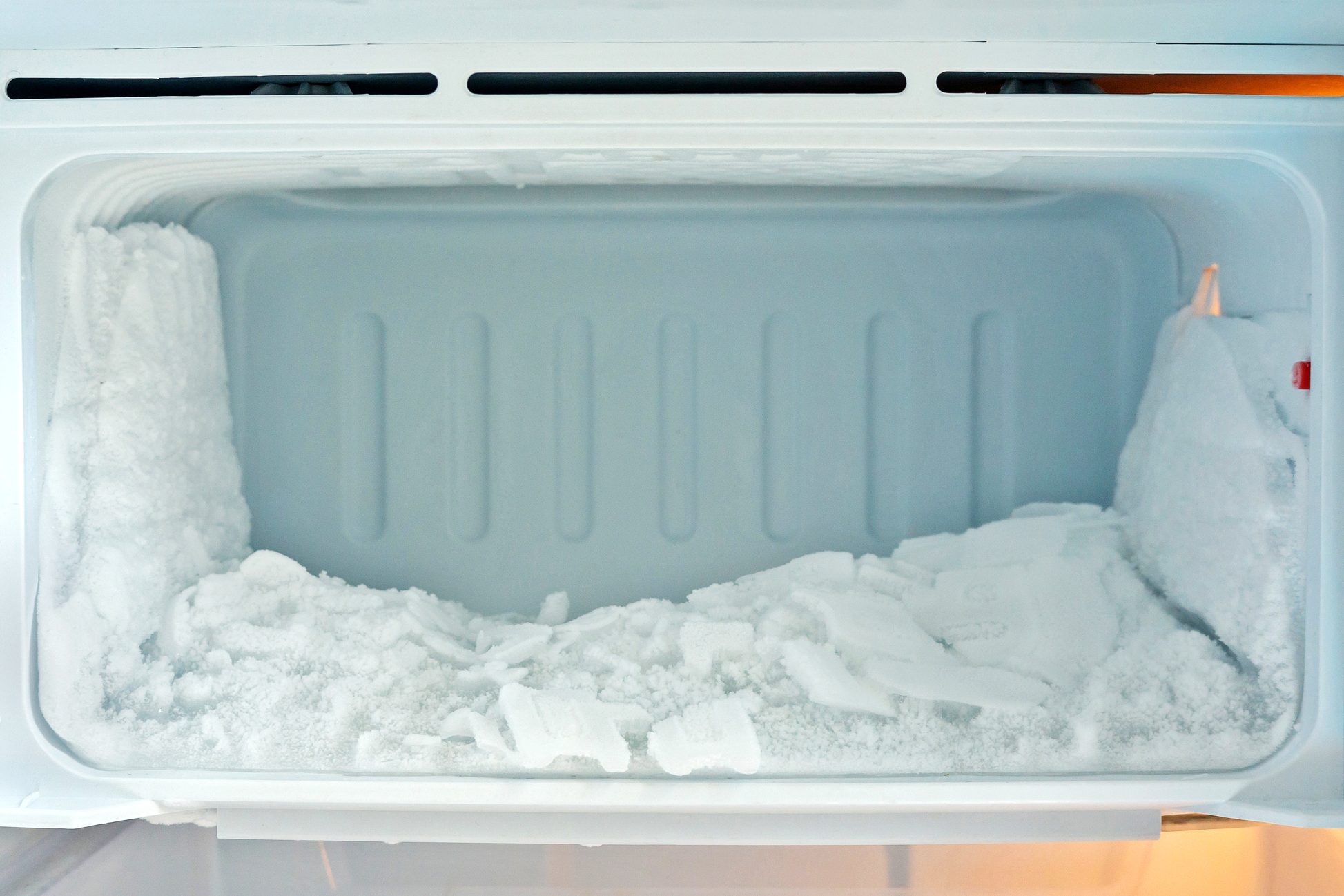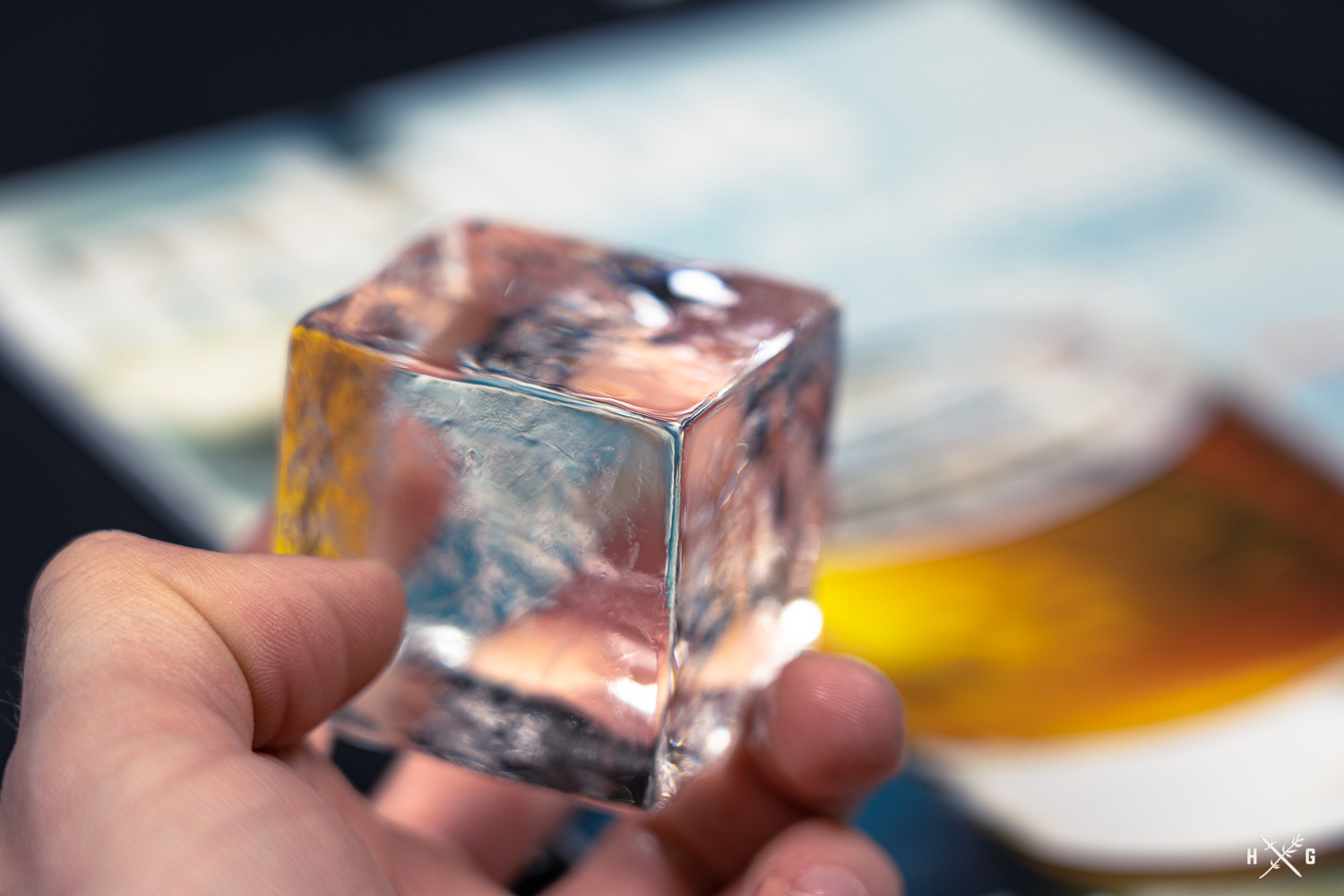Freezers make ice crystals due to fluctuating temperatures and moisture. This can affect the quality of frozen food.
Ice crystals in your freezer can be a common annoyance. They form when moisture from food evaporates and refreezes. Poor sealing or frequent door opening can cause this issue. Small ice crystals are usually harmless but large ones can damage food texture.
To minimize ice crystal formation, store food in airtight containers and keep freezer temperatures stable. Regularly defrosting and organizing your freezer also helps. Understanding the causes of ice crystals can improve your freezer’s efficiency and preserve food quality. By following these tips, you can maintain a better freezer environment.

Credit: www.familyhandyman.com
Common Causes
Frequent changes in temperature can cause ice crystals. Opening the freezer door too often leads to this. Warm air enters and cools down, forming ice. Old or faulty seals may also be a reason. Always check the seals for leaks. Ensure the freezer is set to the correct temperature. The ideal temperature is 0°F or -18°C.
Moisture from outside can get into the freezer. This moisture turns into ice crystals. Storing hot food can also cause this. Always let food cool down before freezing. Uncovered food releases moisture. Use airtight containers to store food. Frost-free freezers help reduce moisture. Keep the freezer clean and dry.
Incorrect Temperature Settings
Incorrect temperature settings can cause a freezer to produce excessive ice crystals. Proper temperature adjustments help maintain food quality and prevent frost buildup.
Ideal Freezer Temperature
The ideal freezer temperature is 0 degrees Fahrenheit (-18 degrees Celsius). This temperature keeps food frozen and prevents ice crystals. Setting the freezer temperature too high causes ice crystals to form. Setting it too low wastes energy and may damage food.
Adjusting Thermostat
Adjust the freezer thermostat to maintain the ideal temperature. Use a thermometer to check the temperature inside the freezer. Turn the thermostat dial slowly to make small adjustments. Wait 24 hours after adjusting to see the temperature change. Doing this ensures the freezer stays at the right temperature.
Door Seal Issues
Check the door gaskets for any cracks or tears. A damaged gasket can let warm air into the freezer. This warm air turns into ice crystals. Clean the gaskets regularly to remove dirt and debris. Use a mild detergent and water for cleaning.
Replace damaged seals to stop ice crystals from forming. Buy the correct gasket for your freezer model. Follow the instructions to install the new gasket. Make sure the new seal fits tightly. A proper seal keeps the cold air inside.
Overloading The Freezer
Overloading the freezer often leads to the formation of ice crystals on food. These crystals can affect texture and taste, reducing overall food quality.
Optimal Storage Practices
Freezers need space to work well. Overloading the freezer can cause ice crystals. Always keep the freezer at 70-80% full. This helps keep the temperature stable. Use sealed containers to store food. This helps prevent moisture buildup. Arrange items in small batches. This makes it easier for cold air to circulate.
Ensuring Proper Airflow
Proper airflow is key to a healthy freezer. Blocked vents cause ice buildup. Leave space between items. This allows air to move freely. Store food in even layers. This helps keep everything cold. Check the door seal. Make sure it closes tightly. A good seal keeps warm air out. Clean the coils regularly. Dirty coils make the freezer work harder.
Improper Food Storage
Keep food in airtight containers to stop ice crystals. Air inside containers makes ice crystals form. Use containers that seal tightly. This keeps food fresh longer.
Let food cool before placing it in the freezer. Warm food causes moisture. Moisture turns to ice crystals. Cooling food first helps keep it fresh.
Defrosting Cycle Problems
Freezer making ice crystals often points to defrosting cycle problems. These issues can lead to inefficient cooling and increased energy consumption. Regular maintenance helps prevent ice build-up.
Understanding Defrost Cycles
Defrost cycles help keep your freezer working well. During a defrost cycle, the freezer warms up slightly. This melts any ice on the coils. If the defrost cycle is broken, ice can build up. This ice can block the freezer’s airflow. Blocked airflow makes the freezer less efficient. It can also cause ice crystals to form on your food. Always check the defrost timer and heater. Replace them if they are not working.
Manual Defrosting Tips
Manual defrosting can be messy but important. Start by unplugging the freezer. Remove all food and store it in a cooler. Use towels to catch water from melting ice. Place bowls of hot water inside to speed up melting. Never use sharp objects to chip away ice. It can damage the freezer. Once all ice is melted, wipe down the inside. Plug the freezer back in and let it cool before putting food back.
Maintaining Humidity Control
Moisture absorbers can help keep your freezer dry. Place them in corners or on shelves. They soak up extra moisture. This stops ice crystals from forming. Check the absorbers regularly. Replace them when they are full.
Clean your freezer every few months. Use warm water and mild soap. Wipe down all surfaces. This removes any built-up ice. Make sure the door seals are tight. Broken seals let in air and moisture. Fix them if needed.
Credit: www.quora.com
Routine Maintenance
Dirty coils make the freezer work harder. Clean the coils every six months. Use a vacuum or brush to remove dust. Clean the vents as well. Blocked vents reduce airflow. This causes ice crystals to form. Ensure vents are clear and unblocked.
Leaks allow warm air inside the freezer. Warm air creates ice crystals. Check the door seals for cracks or tears. Replace damaged seals immediately. Inspect the freezer’s interior for signs of leaks. Fix any issues to prevent ice crystals.

Credit: www.thehumblegarnish.com
Frequently Asked Questions
How To Prevent Ice Crystals In The Freezer?
To prevent ice crystals in the freezer, store food in airtight containers. Ensure the freezer door seals properly. Keep the temperature at or below 0°F (-18°C). Avoid frequent door openings. Cool food before freezing.
Is It Safe To Eat Frozen Food With Ice Crystals?
Yes, it is safe to eat frozen food with ice crystals. Ice crystals indicate minor freezer burn but don’t affect safety.
What Do Ice Crystals On A Frozen Food Indicate?
Ice crystals on frozen food indicate partial thawing and refreezing. This can impact texture and taste. Proper storage is essential.
How Do You Stop Ice Build Up In The Freezer?
To stop ice build-up in the freezer, keep the door closed tightly. Defrost regularly and avoid overloading. Store food properly sealed. Ensure proper ventilation around the freezer. Clean the seals regularly to maintain efficiency.
Conclusion
Addressing ice crystals in your freezer is crucial for food quality. Regular maintenance and proper storage help prevent this issue. Keep your freezer organized and check seals often. By following these tips, you can enjoy fresher food and a more efficient appliance.
Ensure your freezer runs smoothly and stays ice crystal-free.
